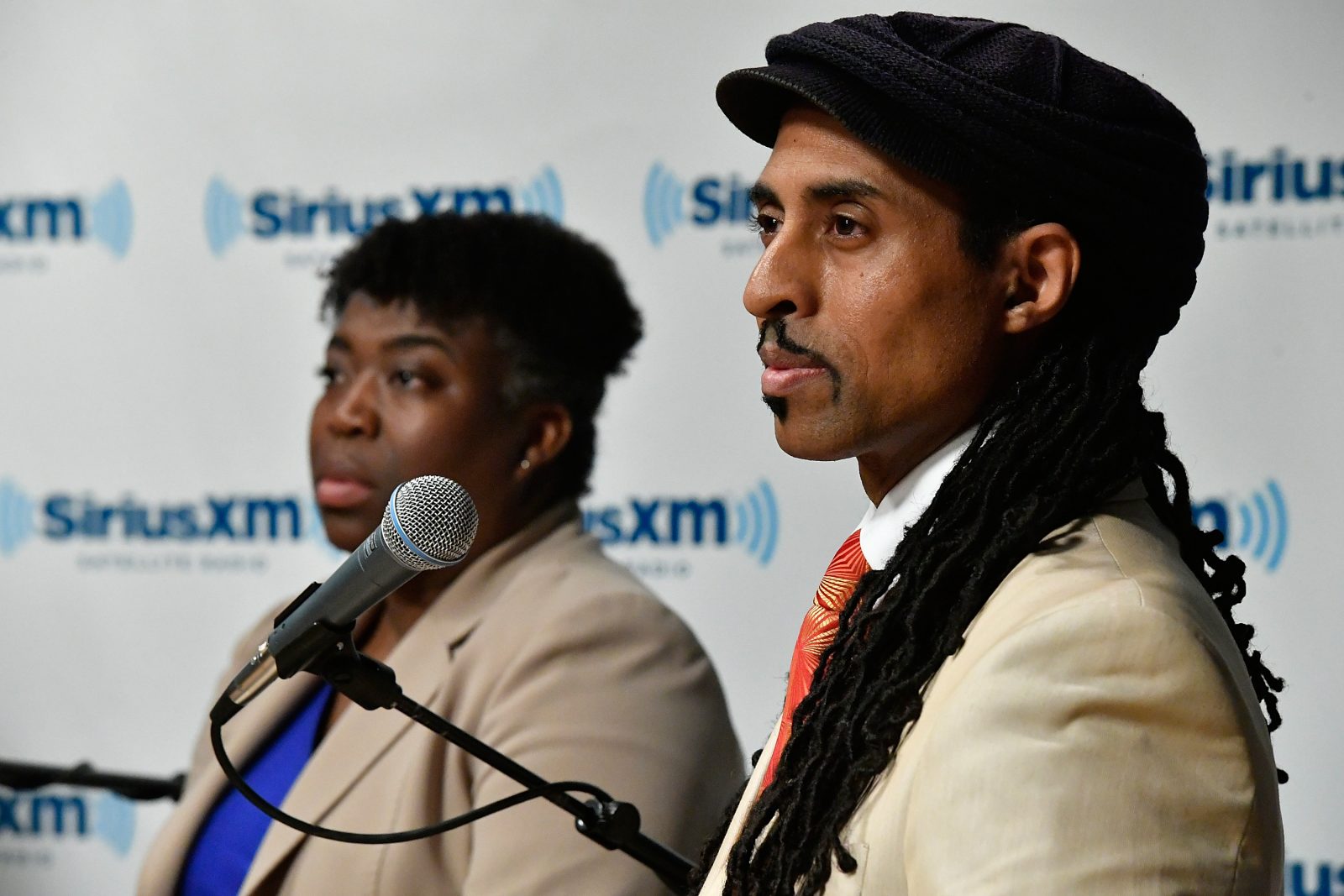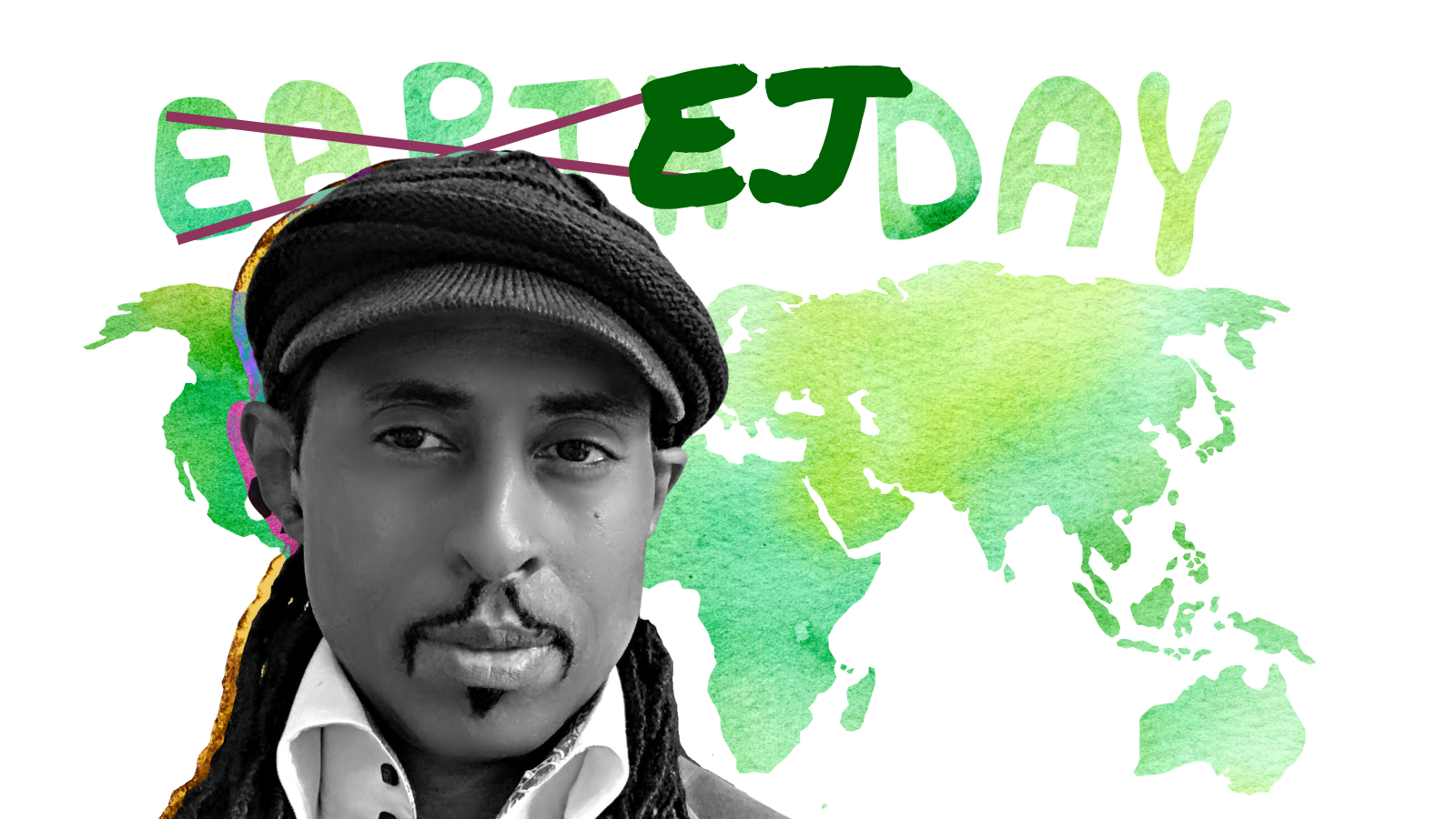Today is Earth Day, a time when people around the world do something for the good of the planet. But for communities on the front lines of the climate crisis, it’s always time for environmental action. Given their continued exposure to air pollution, extreme heat, and flooding, those living in sacrifice zones, who are often people of color, don’t have the luxury of only tuning in one day each April.
It’s those people that activist Mustafa Santiago Ali wants to honor with a federal holiday of their own: Environmental Justice Day. Ali is the vice president of environmental justice, climate, and community revitalization at the National Wildlife Federation. Before that, he led the EPA’s environmental justice program for 24 years. He says it’s past time for a day recognizing that those with the fewest resources are often straddled with the biggest climate burdens.
Last summer’s protests against police brutality intensified conversations about the intersections of race and climate. Ali argues that an Environmental Justice Day could keep attention focused on the issue while also calling out the fact that Earth Day, and the mainstream green movement behind it, has historically lacked diversity in leadership and failed to center the struggles and activism of Black, brown, and Indigenous communities.
Fix talked to Ali about why he thinks the world is finally ready for an Environmental Justice Day, and the impact it could have on our national response to the dual crises of climate change and systemic racism. His comments have been edited for length and clarity.
Q. How much has environmental justice historically factored into Earth Day celebrations?
A. At the first Earth Day celebration in 1970, there was some focus on vulnerable communities, but it was limited. Folks in the movement weren’t using the language of environmental racism. They weren’t paying much attention to the fact that pipelines were being built on Indigenous lands, or that highways were being built through Black communities. And they weren’t acknowledging that, for millennia, Black, brown and Indigenous activists have been fighting deforestation, industrial agriculture, and other major contributors to the climate crisis.
But even back then, at that first Earth Day, there were folks across the country bringing a little flavor into the mix. They were calling attention to the justice issues wrapped up in environmentalism, and their voices have only gotten stronger as we’ve seen the holiday expand in terms of who and what it encompasses. But there’s still a long way to go.
Q. Why is it important to establish an Environmental Justice Day? What impact could it have?
A. An EJ Day is an opportunity to honor all of the incredible work that activists do each and every day, many times without getting paid or receiving any recognition. Through the public awareness it creates, the holiday could bring resources and funding to frontline organizations and communities. It could continue the education that’s so critically needed to help folks understand that we cannot win on climate change if we don’t win on environmental injustice. And it could inspire everyone, from young children all the way up to our elders, to get engaged, because it would connect them to learning opportunities and other people in the movement.
It’s also my hope that the holiday brings policymakers together, both at the federal and state levels, to understand the immediacy of the moment and the need for stronger environmental legislation. Making this a national holiday sends the message that environmental justice is not a partisan issue and there are opportunities for folks to come together to make real change happen.

Q. Why is now an ideal time to establish an EJ Day?
A. A cultural revolution is happening across the planet. People are talking about systemic racism and how we can unpack and dismantle it. There’s unprecedented awareness of and concern about the climate crisis. We have an administration that prioritizes both of those things in its policies. And due to the pandemic, so many folks are questioning the systems we have in place.
All of these factors are converging to give us an opportunity to design the paradigms we need in the 21st century, and environmental justice is a huge driver of the conversation. This is a lunch counter moment — it’s very reminiscent of the activism of the 1950s and ’60s. An EJ Day could help us build on that momentum.
Q. What’re some examples of how people could honor and participate in the holiday?
A. I like to do things in a nontraditional way, so I think it would be great to lead talks and workshops and other educational opportunities in our barbershops and beauty salons, as well as in our community centers and college campuses. We can also use the day to lift up and honor the frontline organizations that are rarely seen and heard, as well as the environmental justice leaders who are no longer with us. Let’s make sure that people know their names and the contributions they’ve made.
This can also be a holiday when we make national proclamations about the work that needs to be done in our country and across the planet. It’s an opportunity to connect with our most vulnerable communities and throw our weight behind the priorities that they have put in place. It’s a day of education. It’s a day of action. It’s a day of hope.
Q. Some might argue that every day should be EJ Day — that carving out a singular day for these issues lets people off the hook for inaction the rest of the year. What’s your response?
A. EJ Day is an opportunity to recruit those who don’t know about the issues and opportunities involved in the fight for environmental justice. This is a day for folks who do not know about the organizations that have been doing the work. For those people, the holiday could be a launching pad. And it does not take away from the work that we will continue to do each and every day. But it is a way to open the doors to those who have not yet been able to contribute in this space.



